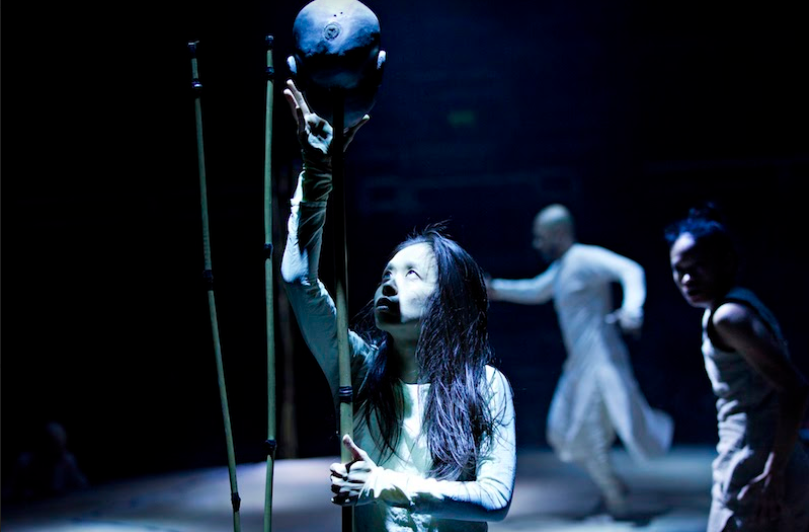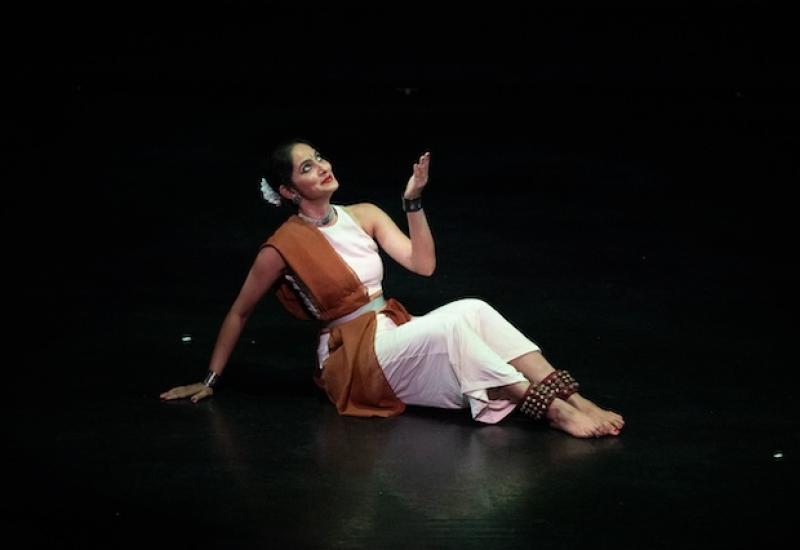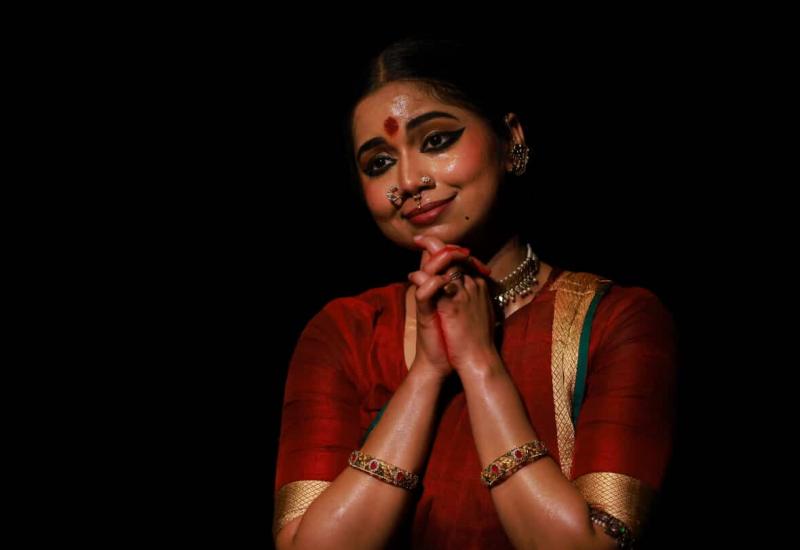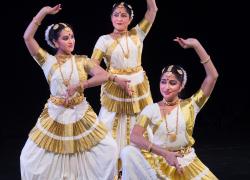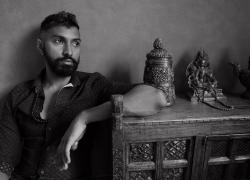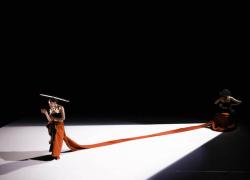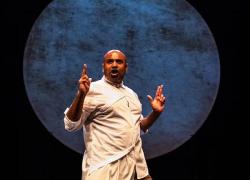Akram Khan's Until The Lions
Until the Lions
Akram Khan Company
The Roundhouse, 14 January 2016
Reviewed by Pranav Yajnik
This review was first published in Pulse 132, Spring 2016.
UNTIL THE LIONS reminded me of the vagaries of attending performances. For no planned reason, neither I nor my three companions on the evening had read any material about the performance beforehand. All I had was the ellipsis of Until the Lions – come? Are the Lions an event? – and a superficial knowledge of Khan’s previous work. So we sat wondering, as the lights dimmed and a lone dancer slunk about the stage, what it was that we were going to watch.
A circular stage in the form of a section of a tree-trunk faced us, mysteriously cracked like the earth in a drought-stricken land. Ching-Ying Chien effortlessly sketched a young girl around its rim, with a few brushstrokes evoking a life before care and fear, and Khan entered into it. Above the stage was raised a human head on a pole, scowling sullenly down on the performers. Needless to say, Chien’s carefree times were not to last as she repeatedly encountered Khan, whipping his kathak spins and snaking arms around the stage like a flag in a hurricane until, with a hand over his face literally but effectively blinding himself to Chien’s hopeful advances, his stubbornness frustrated her every hope and she herself began to change. Youth visibly slipped from her body and left behind hardened, embittered movement that matched Khan’s resolute obstinacy, unwomanned – 'Come, you spirits/That tend on mortal thoughts, unsex me here/And fill me from the crown to the toe-top full/Of direst cruelty!' – into Christine Joy Ritter’s Fury, inexorably bearing down on Khan until the inevitable.
Chien’s capacity to control her almost inhuman flexibility was extraordinary, every limb powering into an improbable twist at her command. Michael Hulls’ lighting, initially subdued, grew in prominence as the performance wore on, until by the redemptive finale it had literally taken centre stage. The troubadour musicians circled the set, balladeering the action on the stage: distant, unnamed lands evoked by the poignant melodies of Sohini Alam and unseen, unknown powers by the unearthly singing of David Azurza.
Khan’s choreography frequently seems to be characterised by the concept of struggle, both physical and mental, and Until the Lions was no exception: movements were brought up short, repeated, attempted to take a different path, met with an obstacle, iterated, groped for a way through. In the end, the violence had proven so profound that the very earth was changed, steaming with Stygian vapours and eerie light. In the silence after the lights fell before the curtain call, the audience’s thoughtfulness about taking delivery of such a multi-textured package of emotions as this was palpable.
But it is a testament to Khan’s conceptualisation that although we four spectators emerged afterwards with four different interpretations of the evening, all of them were variations on a consistent theme of a loss of innocence in the face of the warping power of blind preoccupation; his choreography is effective and legible. Somehow even our later discovery of the impetus for the choreography (the episode of Amba and Bhishma from the Mahabharata) did nothing to dislodge the imagery that the performance had constructed in our minds. Weeks later, the residue of a message against the dangers of uncomprehending, blind belief abide, as did the image of Khan, a hand over his face, slowly and determinedly laying to ruin the innocence of youth.

